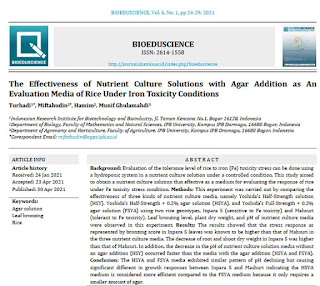The opportunity of plants to escape from unwanted environments is almost nonexistent due to their sessile characteristic. Drought, aluminum (Al), and iron (Fe) toxicity under acid soil conditions are the major constraints as abiotic stresses in rice cultivation, particularly in tropical areas. These abiotic stress tolerance mechanisms are contributed by morphological, physiological, biochemical, and anatomical alterations that affect yield. The level of tolerance to these abiotic stresses is inherited quantitatively and controlled by several genes as quantitative trait loci. The objectives of this review were to highlight the current progress in investigating genes responsible for the drought, Al, and Fe toxicity, and their utilization for genomic improvement in rice. The mechanisms at the levels of morphology, physiology, biochemistry, anatomy, and particularly at the molecular level were discussed in the review. Overall, this review presents a systemic brief of drought, Al, and Fe tolerance mechanisms, recent progress in exploring genes responsible for these traits to the latest innovation in the genomic improvement of high-yielding multi-tolerant rice variety. This review could assist as guidelines for researchers and rice breeders.
For more: Miftahudin et al. 2021 Klik!


